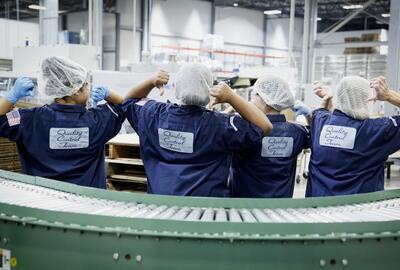Unemployment Rate Dips Slightly to 3.6%
Jobs Growth:
The rate of jobs growth slowed in June to a still healthy 209,000. This put it well below downwardly adjusted May numbers but on a par with the revised April figure of 217,000.
Top Industries:
The government sector saw a substantial bump in June of 60,000 new jobs. Solid gains were also recorded in healthcare, social assistance and construction.
Unemployment:
The unemployment rate saw little change, moving from 3.7% in May to 3.6% in June.
Wages:
Compensation increased in June by 12 cents per hour, bringing the 12-month average hourly rate increase up to 4.4%.
Work Week:
There was a slight uptick in the average work week in June, moving from 34.3 hours to 34.4 hours for the month.
Temporary Job Trends:
Continuing to traverse the unpredictable hills and valleys of recent months, the temp sector shifted from a net addition last month to shed 12,600 jobs in June.
What Does It All Mean?
For months, economists have been expecting a slowdown in jobs growth, usually predicting far lower numbers than the market actually delivered. For June, they achieved some sense of validation, as jobs growth slowed more than has been seen in two-and-a-half years. The creation of more than 200,000 new jobs still represents a healthy economic picture, despite continued concerns about the possibility of a near-term recession, driven in part by inflation and rising interest rates.
It is possible the market is moving toward that nirvana sought by the Federal Reserve where compensation and job growth slow to a point that wrangles inflation under control. It is a point, however, that has not yet been reached, as employers continue to struggle to fill open positions that impact their ability to grow. With a degree of uncertainty in the market, employers have strengthened their retention efforts and fewer people are job switching. That offers a mixed bag of results: good news for the employers who retain more of their highly valued talent but bad news for employers seeking to fill open jobs with people on the move.
Sources: U.S. Bureau of Labor Statistics (BLS), CNBC, CNN, Staffing Industry Analysts, Reuters, USA Today, The New York Times, The Washington Post






